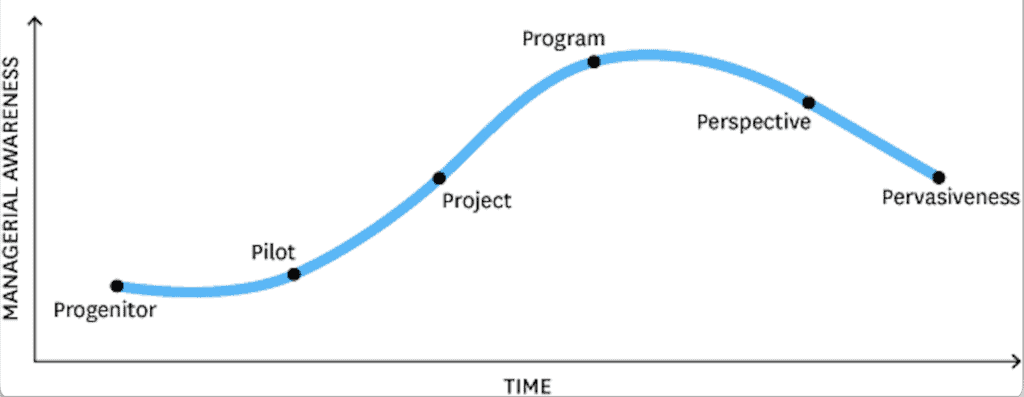I spent some time today talking with colleagues about thought leadership. Here are some additional insights. Thought leaders need to understand the “P-Cycle.” The “P-Cycle is the lifecycle of ideas. Each phase of an idea’s life begins with that letter. Let’s look at the stages of the P-Cycle.

Progenitor Stage. All ideas have progenitors. A progenitor can be a person who brings the idea into an organization or community; but it can also be the earlier ideas themselves, the prior thinking that supplied components and perspectives to the new idea.
Pilot Stage. The first application of a new idea within an organization or community is typically a pilot, where the intent is to learn some of the idiosyncrasies of the idea and how it fits. At this point the idea may have little budget, management support, or visibility within the company.
Project Stage. In the project stage, the idea gains funding, labor, and attention; senior managers become aware of the idea.
Program Stage. If a project becomes successful, it may migrate into a program, which generally involves many parts of the organization or community at once and can go on for years. It is at the program stage that the idea has maximum attention and is discussed in external communications, such as the annual report or analyst briefings.
Perspective Stage. When programs are successful and continue over a long-enough period, they penetrate the mind of the organization or community and become a perspective. At this point, the ideas become integral to everyday work life, though people are still conscious of the idea when they practice it.
Pervasiveness Stage. Finally, pervasiveness is the ideal end state for a business-improvement approach. It’s a perspective that has gone universal and is embedded in the way a company operates.
Thought leaders “lead” by staying ahead of the curve — by recognizing and creating content about ideas before they become too mature. By the time an idea has hit the perspective stage in organizations or communities it’s probably too late to become a thought leader for that idea.
Adapted from: Wilson, J.H. (2012). A Guru’s Guide to Thought Leadership. Harvard Business Review.